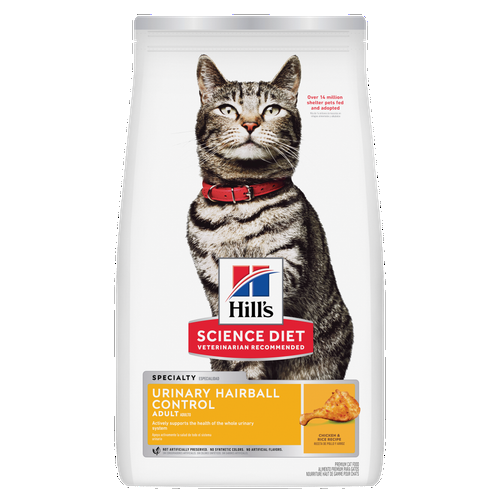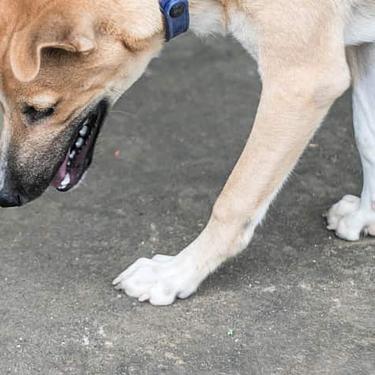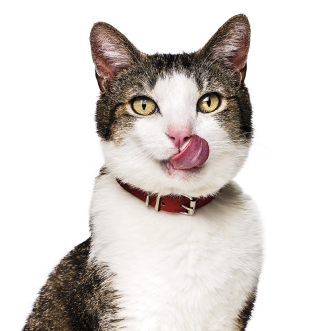
-
Find the right food for your petTake this quiz to see which food may be the best for your furry friend.Find the right food for your petTake this quiz to see which food may be the best for your furry friend.Featured products
 Hill's Science Diet Adult Oral Care Chicken, Brown Rice & Barley Recipe Dog Food
Hill's Science Diet Adult Oral Care Chicken, Brown Rice & Barley Recipe Dog FoodClinically proven kibble technology to reduce plaque & tartar build-up
Shop Now Adult Small & Mini Lamb Meal & Brown Rice Recipe Dog Food
Adult Small & Mini Lamb Meal & Brown Rice Recipe Dog FoodFor the faster metabolism of Small & Mini dogs
Shop Now Adult 7+ Small & Mini Chicken & Brown Rice Recipe Dog Food
Adult 7+ Small & Mini Chicken & Brown Rice Recipe Dog FoodFor the unique nutritional needs of mature Small & Mini dogs
Shop NowFeatured products Adult Urinary Hairball Control Chicken & Rice Recipe Cat Food
Adult Urinary Hairball Control Chicken & Rice Recipe Cat FoodActively supports the health of the whole urinary system
Shop Now Hill's Science Diet Adult Sensitive Stomach & Skin Dog Food
Hill's Science Diet Adult Sensitive Stomach & Skin Dog FoodHighly digestible recipe, gentle on stomachs. Nourishes skin & promotes a lustrous coat
Shop Now Adult Indoor Chicken Recipe Cat Food
Adult Indoor Chicken Recipe Cat FoodSupports energy level and beautiful fur in indoor cats
Shop Now -
Featured articles
 Easy DIY Dog & Cat Toys: Nine of Our Favorites
Easy DIY Dog & Cat Toys: Nine of Our FavoritesBrowse this comprehensive guide for several of our favorite DIY dog and cat toys that are sure to put a little pep in your pet's step.
Read More My Pet Ate a Lizard — What Should I Do?
My Pet Ate a Lizard — What Should I Do?Learn what to do if your pet eats a lizard, including whether they can be toxic and symptoms to keep an eye on when they've swallowed one.
Read More 15 Pet-Friendly Cities Ideal for a US Road Trip
15 Pet-Friendly Cities Ideal for a US Road TripCheck out our list of pet-friendly U.S. cities that are excellent travel options, offering off-leash dog parks and pet-friendly restaurants & hotels.
Read More -



Why Kidney Disease is a Killer in Cats…But Doesn't Have to Be
Most people recognize cancer as the silent killer of cats, but did you also know kidney disease can take your cat's life unexpectedly? In fact, according to the Morris Animal Foundation, chronic kidney disease (CKD) is the number one killer of cats in the U.S. To better prepare and protect your cat from this horrible affliction, read on and learn a bit more about how kidney disease affects cats.
1. Kidneys are Vital
According to the Washington State University College of Veterinary Medicine, your cat's kidneys "act as a complex filter that removes from blood wastes that are generated from break down of food, old cells, toxins or poisons and many drugs that are given for treatment of other diseases." Your cat's two kidneys also help regulate blood pressure and calcium and vitamin D metabolism, as well as produce a substance that helps with the creation of new red blood cells. Due to the various functions of the kidneys, a cat with kidney disease may display a multitude of signs. However, these signs may not become apparent as quickly as you'd imagine.


Tasty Tips
2. Visible Kidney Disease Signs May Take Time
Kidneys are made up of microscopic nephrons. As your cat ages or if the kidneys become damaged, some nephrons begin to die and other reserve (or "resting") nephrons take over. Once there are no extra nephrons remaining, your cat may begin to display signs of kidney damage such as loss of appetite, weight loss, increased thirst, and anemia. However, this often only occurs once 75% of kidney function (2/3 of nephrons) has been lost. This is why it is so important that you bring your cat to your veterinarian at least once a year and remain vigilant for unusual signs in your cat's behavior. It may help prevent your cat from developing kidney disease in the first place.
For the complete slideshow on 4 Must-Know Facts About Kidney Disease in Cats, visit petMD.


One of our staff authors prepared this article for you
Related products
Related articles

Put your cat on a diet without them knowing
Our low calorie formula helps you control your cat's weight. It's packed with high-quality protein for building lean muscles, and made with purposeful ingredients for a flavorful, nutritious meal. Clinically proven antioxidants, Vitamin C+E, help promote a healthy immune system.
Put your cat on a diet without them knowing
Our low calorie formula helps you control your cat's weight. It's packed with high-quality protein for building lean muscles, and made with purposeful ingredients for a flavorful, nutritious meal. Clinically proven antioxidants, Vitamin C+E, help promote a healthy immune system.

